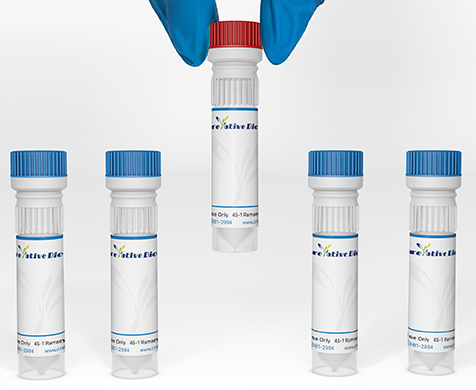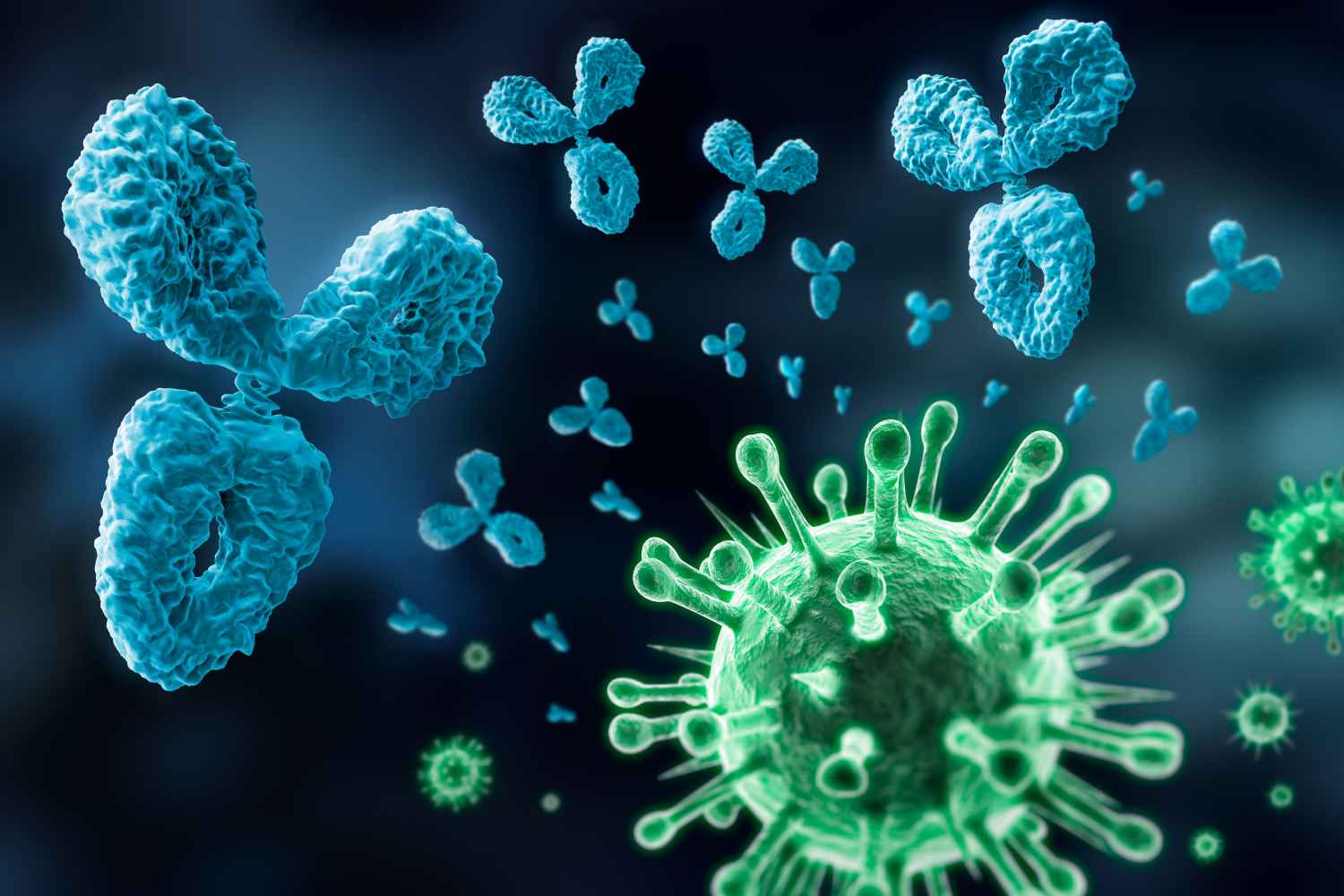GSDMD
Gasdermin D is a member of the gasdermin family. Members of this family appear to play a role in regulation of epithelial proliferation. Gasdermin D has been suggested to act as a tumor suppressor. Alternatively spliced transcript variants have been described. [provided by RefSeq, Oct 2009]
Full Name
Gasdermin D
Function
Gasdermin-D:
Precursor of a pore-forming protein that plays a key role in host defense against pathogen infection and danger signals (PubMed:26375003, PubMed:26375259, PubMed:27281216).
This form constitutes the precursor of the pore-forming protein: upon cleavage, the released N-terminal moiety (Gasdermin-D, N-terminal) binds to membranes and forms pores, triggering pyroptosis (PubMed:26375003, PubMed:26375259, PubMed:27281216).
Gasdermin-D, N-terminal:
Promotes pyroptosis in response to microbial infection and danger signals (PubMed:26375003, PubMed:26375259, PubMed:27418190, PubMed:28392147, PubMed:32820063).
Produced by the cleavage of gasdermin-D by inflammatory caspases CASP1, CASP4 or CASP5 in response to canonical, as well as non-canonical (such as cytosolic LPS) inflammasome activators (PubMed:26375003, PubMed:26375259, PubMed:27418190).
After cleavage, moves to the plasma membrane where it strongly binds to inner leaflet lipids, including monophosphorylated phosphatidylinositols, such as phosphatidylinositol 4-phosphate, bisphosphorylated phosphatidylinositols, such as phosphatidylinositol (4,5)-bisphosphate, as well as phosphatidylinositol (3,4,5)-bisphosphate, and more weakly to phosphatidic acid and phosphatidylserine (PubMed:27281216, PubMed:29898893).
Homooligomerizes within the membrane and forms pores of 10-15 nanometers (nm) of inner diameter, allowing the release of mature IL1B and triggering pyroptosis (PubMed:27418190, PubMed:27281216, PubMed:29898893).
Exhibits bactericidal activity (PubMed:27281216).
Gasdermin-D, N-terminal released from pyroptotic cells into the extracellular milieu rapidly binds to and kills both Gram-negative and Gram-positive bacteria, without harming neighboring mammalian cells, as it does not disrupt the plasma membrane from the outside due to lipid-binding specificity (PubMed:27281216).
Under cell culture conditions, also active against intracellular bacteria, such as Listeria monocytogenes (By similarity).
Also active in response to MAP3K7/TAK1 inactivation by Yersinia toxin YopJ, which triggers cleavage by CASP8 and subsequent activation (By similarity).
Strongly binds to bacterial and mitochondrial lipids, including cardiolipin (PubMed:27281216).
Does not bind to unphosphorylated phosphatidylinositol, phosphatidylethanolamine nor phosphatidylcholine (PubMed:27281216).
Precursor of a pore-forming protein that plays a key role in host defense against pathogen infection and danger signals (PubMed:26375003, PubMed:26375259, PubMed:27281216).
This form constitutes the precursor of the pore-forming protein: upon cleavage, the released N-terminal moiety (Gasdermin-D, N-terminal) binds to membranes and forms pores, triggering pyroptosis (PubMed:26375003, PubMed:26375259, PubMed:27281216).
Gasdermin-D, N-terminal:
Promotes pyroptosis in response to microbial infection and danger signals (PubMed:26375003, PubMed:26375259, PubMed:27418190, PubMed:28392147, PubMed:32820063).
Produced by the cleavage of gasdermin-D by inflammatory caspases CASP1, CASP4 or CASP5 in response to canonical, as well as non-canonical (such as cytosolic LPS) inflammasome activators (PubMed:26375003, PubMed:26375259, PubMed:27418190).
After cleavage, moves to the plasma membrane where it strongly binds to inner leaflet lipids, including monophosphorylated phosphatidylinositols, such as phosphatidylinositol 4-phosphate, bisphosphorylated phosphatidylinositols, such as phosphatidylinositol (4,5)-bisphosphate, as well as phosphatidylinositol (3,4,5)-bisphosphate, and more weakly to phosphatidic acid and phosphatidylserine (PubMed:27281216, PubMed:29898893).
Homooligomerizes within the membrane and forms pores of 10-15 nanometers (nm) of inner diameter, allowing the release of mature IL1B and triggering pyroptosis (PubMed:27418190, PubMed:27281216, PubMed:29898893).
Exhibits bactericidal activity (PubMed:27281216).
Gasdermin-D, N-terminal released from pyroptotic cells into the extracellular milieu rapidly binds to and kills both Gram-negative and Gram-positive bacteria, without harming neighboring mammalian cells, as it does not disrupt the plasma membrane from the outside due to lipid-binding specificity (PubMed:27281216).
Under cell culture conditions, also active against intracellular bacteria, such as Listeria monocytogenes (By similarity).
Also active in response to MAP3K7/TAK1 inactivation by Yersinia toxin YopJ, which triggers cleavage by CASP8 and subsequent activation (By similarity).
Strongly binds to bacterial and mitochondrial lipids, including cardiolipin (PubMed:27281216).
Does not bind to unphosphorylated phosphatidylinositol, phosphatidylethanolamine nor phosphatidylcholine (PubMed:27281216).
Biological Process
Defense response to bacterium Source: GO_Central
Defense response to Gram-negative bacterium Source: UniProtKB
Defense response to Gram-positive bacterium Source: UniProtKB
Inflammatory response Source: UniProtKB-KW
Innate immune response Source: UniProtKB-KW
Neutrophil degranulation Source: Reactome
Pore complex assembly Source: UniProtKB
Pore formation in membrane of other organism Source: UniProtKB
Positive regulation of interleukin-1 beta production Source: UniProtKB
Protein homooligomerization Source: UniProtKB
Pyroptosis Source: UniProtKB
Defense response to Gram-negative bacterium Source: UniProtKB
Defense response to Gram-positive bacterium Source: UniProtKB
Inflammatory response Source: UniProtKB-KW
Innate immune response Source: UniProtKB-KW
Neutrophil degranulation Source: Reactome
Pore complex assembly Source: UniProtKB
Pore formation in membrane of other organism Source: UniProtKB
Positive regulation of interleukin-1 beta production Source: UniProtKB
Protein homooligomerization Source: UniProtKB
Pyroptosis Source: UniProtKB
Cellular Location
Gasdermin-D: Cytosol; Inflammasome. In response to a canonical inflammasome stimulus, such as nigericin, recruited to NLRP3 inflammasone with similar kinetics to that of uncleaved CASP1 precursor.
Gasdermin-D, N-terminal: Secreted; Cell membrane. Released in the extracellular milieu following pyroptosis.
Gasdermin-D, C-terminal: Cytosol
Gasdermin-D, N-terminal: Secreted; Cell membrane. Released in the extracellular milieu following pyroptosis.
Gasdermin-D, C-terminal: Cytosol
PTM
Cleavage at Asp-275 by CASP1 (mature and uncleaved precursor forms), CASP4, CASP5 or CASP8 relieves autoinhibition and is sufficient to initiate pyroptosis (PubMed:26375003, PubMed:29898893, PubMed:32109412). Cleavage by CASP1 and CASP4 is not strictly dependent on the consensus cleavage site on GSDMD but depends on an exosite interface on CASP1 that recognizes and binds the Gasdermin-D, C-terminal (GSDMD-CT) part (PubMed:32109412). Cleavage by CASP8 takes place following inactivation of MAP3K7/TAK1 by Yersinia toxin YopJ (By similarity). Cleavage at Asp-87 by CASP3 or CAPS7 inactivates the ability to mediate pyroptosis (PubMed:28392147, PubMed:28045099).
Gasdermin-D:
Succination of Cys-191 by the Krebs cycle intermediate fumarate, which leads to S-(2-succinyl)cysteine residues, inhibits processing by caspases, and ability to initiate pyroptosis (PubMed:32820063). Succination modification is catalyzed by a non-enzymatic reaction caused by an accumulation of fumarate (PubMed:32820063).
Gasdermin-D:
Succination of Cys-191 by the Krebs cycle intermediate fumarate, which leads to S-(2-succinyl)cysteine residues, inhibits processing by caspases, and ability to initiate pyroptosis (PubMed:32820063). Succination modification is catalyzed by a non-enzymatic reaction caused by an accumulation of fumarate (PubMed:32820063).
View more
Anti-GSDMD antibodies
+ Filters
 Loading...
Loading...
Target: GSDMD
Host: Mouse
Antibody Isotype: IgG1
Specificity: Human
Clone: CBLG1-245
Application*: E, IC, IH, WB
Target: GSDMD
Host: Mouse
Antibody Isotype: IgG1
Specificity: Human
Clone: 3F12-1B2
Application*: WB, E, P, IC, IF
Target: GSDMD
Specificity: Human
Target: GSDMD
Specificity: Human
Target: GSDMD
Host: Mouse
Antibody Isotype: IgG2a
Specificity: Human
Clone: 2E6C7
Application*: ELISA, IF, WB
Target: GSDMD
Host: Mouse
Antibody Isotype: IgG1
Specificity: Human
Clone: CBFYH-2985
Application*: E, IF, P, WB
More Infomation
Hot products 
-
Mouse Anti-DDC Recombinant Antibody (8E8) (CBMAB-0992-YC)

-
Rabbit Anti-ATF4 Recombinant Antibody (D4B8) (CBMAB-A3872-YC)

-
Mouse Anti-CCDC25 Recombinant Antibody (CBLC132-LY) (CBMAB-C9786-LY)

-
Mouse Anti-CD24 Recombinant Antibody (HIS50) (CBMAB-C10123-LY)

-
Mouse Anti-AGO2 Recombinant Antibody (V2-634169) (CBMAB-AP203LY)

-
Mouse Anti-CASQ1 Recombinant Antibody (CBFYC-0863) (CBMAB-C0918-FY)

-
Mouse Anti-ARHGAP5 Recombinant Antibody (54/P190-B) (CBMAB-P0070-YC)

-
Rabbit Anti-Acetyl-Histone H3 (Lys36) Recombinant Antibody (V2-623395) (CBMAB-CP0994-LY)

-
Mouse Anti-B2M Recombinant Antibody (CBYY-0050) (CBMAB-0050-YY)

-
Mouse Anti-AKR1B1 Antibody (V2-2449) (CBMAB-1001CQ)

-
Mouse Anti-ACTG1 Recombinant Antibody (V2-179597) (CBMAB-A0916-YC)

-
Mouse Anti-CAPZB Recombinant Antibody (CBYY-C0944) (CBMAB-C2381-YY)

-
Mouse Anti-BHMT Recombinant Antibody (CBYY-0547) (CBMAB-0550-YY)

-
Mouse Anti-CRYAB Recombinant Antibody (A4345) (CBMAB-A4345-YC)

-
Mouse Anti-ELAVL4 Recombinant Antibody (6B9) (CBMAB-1132-YC)

-
Mouse Anti-AHCYL1 Recombinant Antibody (V2-180270) (CBMAB-A1703-YC)

-
Mouse Anti-COL1A2 Recombinant Antibody (CF108) (V2LY-1206-LY626)

-
Mouse Anti-AQP2 Recombinant Antibody (E-2) (CBMAB-A3358-YC)

-
Rabbit Anti-Acetyl-Histone H4 (Lys16) Recombinant Antibody (V2-623415) (CBMAB-CP1021-LY)

-
Mouse Anti-ASB9 Recombinant Antibody (1D8) (CBMAB-A0529-LY)

For Research Use Only. Not For Clinical Use.
(P): Predicted
* Abbreviations
- AActivation
- AGAgonist
- APApoptosis
- BBlocking
- BABioassay
- BIBioimaging
- CImmunohistochemistry-Frozen Sections
- CIChromatin Immunoprecipitation
- CTCytotoxicity
- CSCostimulation
- DDepletion
- DBDot Blot
- EELISA
- ECELISA(Cap)
- EDELISA(Det)
- ESELISpot
- EMElectron Microscopy
- FFlow Cytometry
- FNFunction Assay
- GSGel Supershift
- IInhibition
- IAEnzyme Immunoassay
- ICImmunocytochemistry
- IDImmunodiffusion
- IEImmunoelectrophoresis
- IFImmunofluorescence
- IGImmunochromatography
- IHImmunohistochemistry
- IMImmunomicroscopy
- IOImmunoassay
- IPImmunoprecipitation
- ISIntracellular Staining for Flow Cytometry
- LALuminex Assay
- LFLateral Flow Immunoassay
- MMicroarray
- MCMass Cytometry/CyTOF
- MDMeDIP
- MSElectrophoretic Mobility Shift Assay
- NNeutralization
- PImmunohistologyp-Paraffin Sections
- PAPeptide Array
- PEPeptide ELISA
- PLProximity Ligation Assay
- RRadioimmunoassay
- SStimulation
- SESandwich ELISA
- SHIn situ hybridization
- TCTissue Culture
- WBWestern Blot

Online Inquiry







